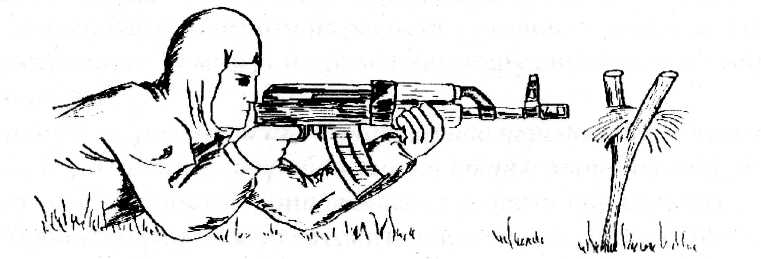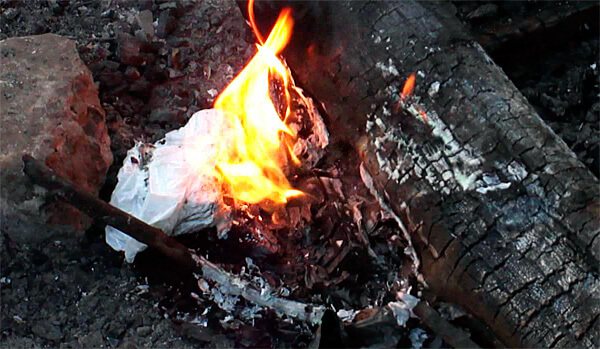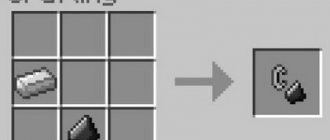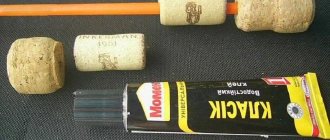AA batteries
The AA battery has long been used as the main power source for most electronic devices. Most people use them almost every day. Thanks to this, you can use the devices without connecting to the electrical network. Different batteries differ only in the time of use.
AA batteries
Quite often, high-power devices include charged batteries. These methods are very practical and economical, so they are used by most buyers. After the maximum number of hours worked, the batteries must be charged and then reinserted into the device.
Let's look at what types of AA batteries are:
- Saline . The usage time is quite short. And they quickly lose their energy charge. Marked with the letter R.
- Alkaline. They have the inscription Alkaline, thus this is considered their distinctive feature. They last much longer and are of better quality than salt ones. Marking with letters LR.
- Mercury. These batteries can be stored for a long time and their volume is quite large. Mercury oxide is the main constituent element. They are not popular in everyday life.
- Lithium . The service life of such batteries is longer than others, and their level of reliability is higher, since they withstand temperature changes much better.
Previously, batteries were made in such a way that the electrodes were brought out. However, this option was quite impractical and led to a short circuit. Now an insulated metal or plastic case is being created. Thanks to this, the service life is extended. Currently they are cylindrical in shape. The diameter of such batteries is 13.5-14.5 mm. At the ends there is a positive and negative terminal.
It couldn't be simpler
Suppose you find an ordinary AA battery in one pocket. AA, AAA, small “barrel” C, and thick “D” will do - it doesn’t matter. Half the battle is already done, now you need to find a piece of chewing gum in the other pocket. Or a pack of cigarettes. Or, at worst, a chocolate bar - in general, any item that has foil in its packaging. Ideally, you need a two-layer material, where the foil serves as the top layer and the bottom layer is paper. But clean foil will also work, you just have to tinker with it a little.
You will also need a knife, but if necessary, you can carefully tear the foil without using a sharp blade. So, first cut out a fairly wide strip of foil (about 1.5 cm wide).
The length should be such that one end of the strip can touch the positive end of the battery, and the other - the negative end. Now you need to make the central part of the strip thin, that is, create a narrow jumper there (about 2 mm wide). That's almost all.
Find a flat surface, place something on it that will ignite quickly (for example, dry moss if you are in the forest), and “stick” this material around the bridge on the foil. In our experiment, we wrapped the wick of an ordinary candle in cotton wool.
If you now connect the ends of the strip to the poles of the battery, then current will flow through the strip, it will begin to heat up, and the paper layer will light up.
It burns out in a matter of seconds, so you need the strip to touch the flammable material so that it has time to set.
If you only have regular foil, the method will also work, but you will have to wait longer - until the heated foil directly ignites the moss or cotton wool.
How to Start a Fire with a Battery and Foil
To start a fire from a battery, we need the battery itself and foil. When current is released through the metal, heating begins to occur. The more powerful the battery, the more heating occurs.
To light a fire using a regular battery and foil, we take a chocolate wrapper. A good way to extract fire is to use foil with a layer, since in this case it acts like tinder, which is pressed tightly against the metal and ignites.
Aluminum foil will also work.

making fire using a battery and foil
Here are a number of steps required for this process:
- You need to cut a strip from the foil so that the edges stretch freely to the battery pole. The width will be at least 5 mm. If the strip is thin, the foil will get very hot and may even burn your hands.
- In the center of the cut strip we make a narrow section, the width of which is about 2 mm. If such an area is too wide, the foil may not heat up at all, and if it is too narrow, it may tear. The transition from the wide part to the narrow part should be smooth.
- If there is no paper layer in the foil, you need to use tinder.
- Using your index finger and thumb, we clamp both ends of the foil strip to opposite terminals - we close the circuit, and the paper on the foil ignites. At this moment you need to have time to light the tinder.
Step by step starting a fire using a battery
Before you start, you need to prepare your equipment, so to speak! Here's what you'll need:
- A place with not strong wind.
- Wood fuel, that is, firewood, chips, branches. Preferably dry.
- Dry grass, leaves, paper or cotton wool.
- Battery type AA, AAA or any other 1.5 volt.
- Foil from cigarettes, chewing gum or candy. There should be paper on one side. Regular food foil will also work.
During this event, please ensure that there is no fire.
Step #1.
To light a fire, take dry grass and put it in a small pile. Place branches or thin wood chips on top. The main thing is that everything is dry. The fire needs to light up the first time.
Step #2.
Let's prepare the incendiary element. To do this, use scissors to cut a strip of foil 1-1.5 cm wide. Make the middle narrower by 1-2 mm. This is the most difficult moment, since one wrong movement can lead to the foil becoming unusable. Therefore, to light a fire you need to concentrate and do everything smoothly.
In the forest you are unlikely to have scissors, but it is likely that a knife will be at hand. To make cuts, place the foil on a flat stone or stump and remove excess with gentle movements.
Step #3.
If foil from chewing gum or cigarettes was used, then paper is glued there and that’s good. The contact is tighter and will therefore tan faster. If you used chocolate foil or regular food foil, you will have to very carefully wrap the middle of the workpiece with cotton wool, a napkin, paper (preferably toilet paper), etc.
Place the incendiary element into a dry fire that has already been prepared in advance. Connect the contacts to the battery poles. If you see sparks and smoke, blow there, the wind will improve the combustion.
Thus, it is now clear how to light a fire using a battery.
It may not always work out the first time.
For everything to work out as it should, just follow the basic rules:
- The middle of the foil should be no more than 2 mm.
- Paper, cotton wool and other burning objects must adhere very tightly to the plate.
- When smoke or sparks appear, blow.
- For a more pronounced effect, use 2 batteries connected in series.
If fire does not occur, then make the middle of the foil even thinner, use 2 batteries or replace the battery, it may be dead. This will help light the fire faster!
Operating principle
It's really simple! A short circuit occurs causing the foil to heat up. The longer this contact lasts, the more the foil will heat up. Once the temperature reaches high values, the attached paper will ignite. The flame will spread to nearby objects, such as cotton wool, moss, dry grass, etc. And after that, lighting a fire will not be difficult!
You can light a fire using a battery and foil due to the fact that when an electric current flows through the metal, it heats up. This heating is stronger the more powerful the battery and the smaller the cross-sectional area of the conductor. In the case of foil, the smallest area will be in the narrowest part of the foil, which is where the heat will be sufficient to ignite the paper or other tinder applied to the foil.
Making fire using a battery and foil
The method is based on the same principle using a simple AA battery, stranded wire and matches (used when the box gets wet or to create alarms using pyrotechnics). In this case, a narrowed section is created by removing all wire strands except one. This core is wound around the match head and, heating up during contact closure, ignites the match.
In order to start a fire using foil and a battery, you need to take a chewing gum or chocolate wrapper (although almost any other foil, for example, food foil, will be suitable for these purposes). In survival conditions, foil can be found among the garbage, including even on the shore of an uninhabited island, where the foil can be washed up by a wave.
The best way to create a fire is foil with a paper layer, since the paper in this case acts as tinder, tightly pressed to the metal layer, and lights up when the circuit is closed. But regular clean aluminum foil will work too, although it will require more work.
- It is necessary to cut a strip of foil so long that its edges freely reach the battery poles. The width of this strip must be at least 5 mm. If the strip is thin enough, the entire foil will become noticeably hot and may burn your fingers.
- A narrowed section about 2 mm wide is made in the center of the strip. If this area is made too wide, the foil may not heat up to the desired temperature, and if it is too narrow, the foil may tear. The transition from the wide part to the narrowed part should be smooth. For convenience, fold the foil in half and cut off the excess.
- If the foil is without a paper layer, you need to use tinder, for example, dry cattail fluff. Two small balls are rolled from the fluff, and a thin piece of foil is sandwiched between them.
- With your index finger and thumb, both ends of the foil strip are pressed against opposite terminals of any battery - the circuit is closed, and the paper on the foil ignites, although only for a moment. At this moment, she needs to have time to set fire to the tinder or kindling, if, of course, these manipulations were intended to start a fire.
The video shows how to light a fire using a battery and foil:
In the case of clean foil and tinder, when the battery contacts are closed, a slightly different picture is observed. Here the tinder begins not to flare up, but to smolder. Therefore, to light a fire, it must be fanned, providing an influx of fresh air, and placed in the kindling.
If the strip of foil is too short and does not reach the battery terminals, or for ease of working with the battery itself, you can do the following. The side of the battery case from the negative terminal side is cleaned of glue and film. This stripped part has a positive charge, therefore one end of a strip of foil can be applied to this area.
When starting a fire from a mobile phone or smartphone battery, there is no need to make the foil strip so narrow in the central part: a width of 5–8 mm will be quite enough. The edges of the tape are folded into a “sausage” for better contact with the battery terminals. Also in this case, it is better to protect your fingers by placing some kind of heat insulator between them and the foil, for example, paper folded in several layers.
On a note
Some people think that you can start a fire with a battery and chewing gum, but this is not true. To light a fire, you will need not the chewing gum itself, but a foil wrapper from it, preferably with a paper layer. It is this foil, together with any battery, that will allow you to create a flame.
How to light a fire. Several ways
By using a magnifying glass. Thanks to a magnifying glass, binoculars, or glasses, you can capture the sun's rays on the tinder and ignite it. Rays falling on tinder should be kept motionless.
With a gun. Thanks to the gun, you can ignite tinder with a shot. To do this, you need to remove the bullet or shot, as well as some gunpowder. Fill the sleeve with cotton wool or small birch bark. Make a shot into the ground next to the tinder. We pour a little gunpowder on it and try to light it, striking sparks with a hammer.

fire with a gun
Security measures
If you use these methods, you must take safety precautions:
- Light a fire to the side using flammable substances.
- To protect your fingers, use paper and fold it several times.
- Never throw the battery into a fire, otherwise it will explode.
- Batteries that you have already used should be returned to a collection point.
The last point of these rules also applies to tourists. All these methods of starting a fire are typical for urban environments.
0
Author of the publication
offline 2 years
Nika
7
I am interested in hiking and traveling, photography and videography. I have been going hiking since childhood. The whole family went and went - sometimes to the sea, then to the river, to the lake, to the forest. There was a time when we spent a whole month in the forest. We lived in tents and cooked over fires. This is probably why I am still drawn to the forest and, in general, to nature. I travel regularly. About three trips a year for 10-15 days and many 2 and 3 day hikes.
Comments: 0Publications: 668Registration: 10/23/2018
Nika Fire, warmth
Batteries suitable for starting a fire
To create a fire, you can only use charged batteries and accumulators: discharged ones, for obvious reasons, will not be able to heat the foil, since they will not ensure the flow of current through the foil.
In extreme cases, you can start a fire by breaking through the casing of a lithium-ion battery. But this is dangerous: often due to mechanical damage, such batteries swell, catch fire and, due to the large amount of gases released, can explode and fly several meters to the side. This is fraught with burns and fires.
Extinguishing lithium-ion batteries is ineffective, since they can often burn without access to air, and water entering the cell can lead to the release of hydrogen, a flammable gas

Burning lithium-ion battery
It is important to remember that many phone batteries are equipped with short circuit protection. Therefore, when planning to light a fire from such a battery, you need to use foil of the maximum length. To do this, you can cut a strip from a regular wrapper, for example, in a spiral.
It is worth noting that in a survival situation, before starting a fire using batteries, you need to think carefully about everything. Thus, a telephone, walkie-talkie, navigator or flashlight powered by them may, in a certain situation, be more important than a fire, for which a single source of electrical power can be installed.
However, the video below shows that starting a fire uses approximately 3% of your phone's battery power:
From my own observations I can say that attempts to start or add fire in this way do not always end in success. Sometimes the paper in the thin part of the foil simply chars and tears without igniting, and sometimes the remaining battery charge is not enough to heat the foil to the desired temperature.

A case where a too narrow jumper was made on a strip of foil.











